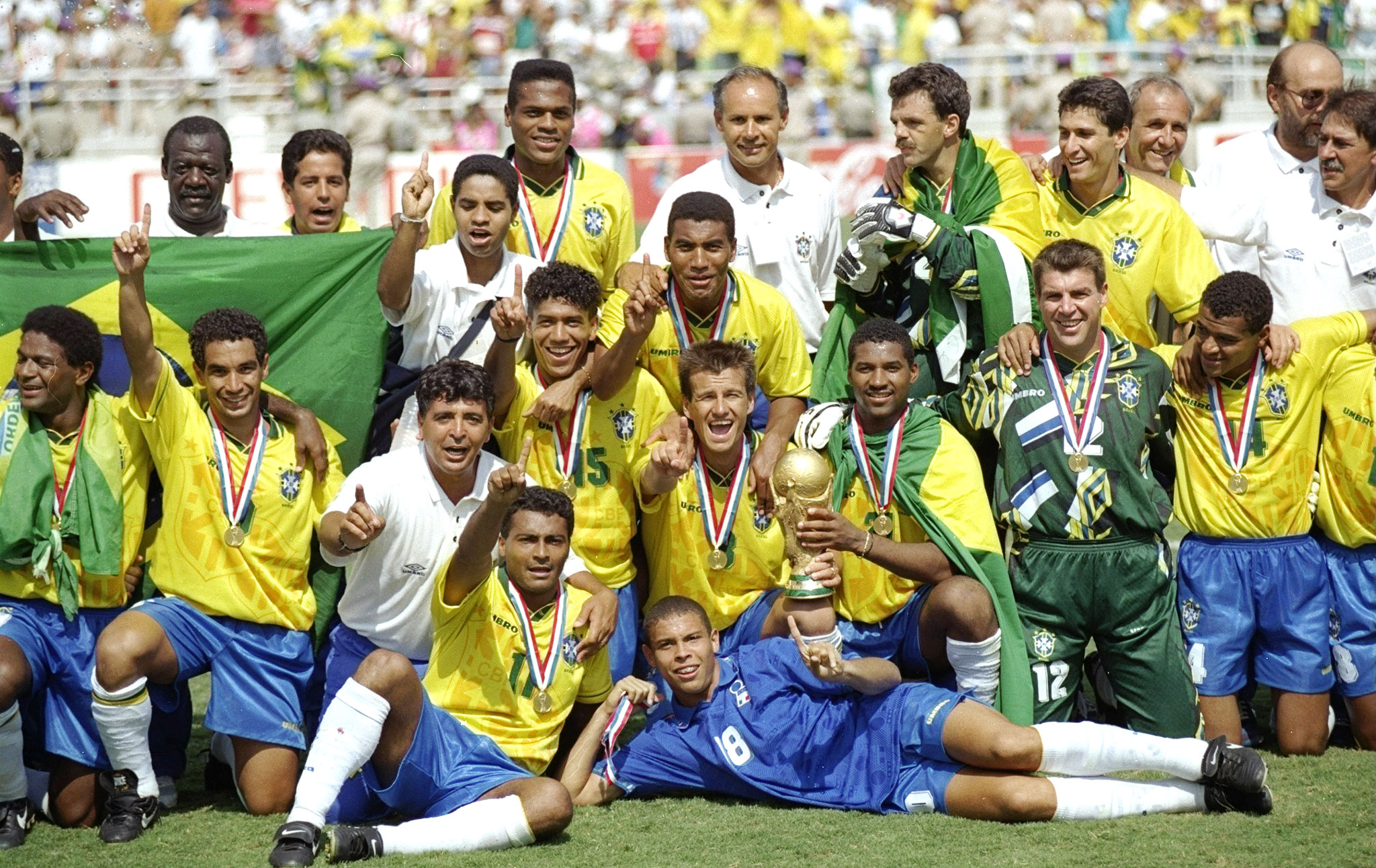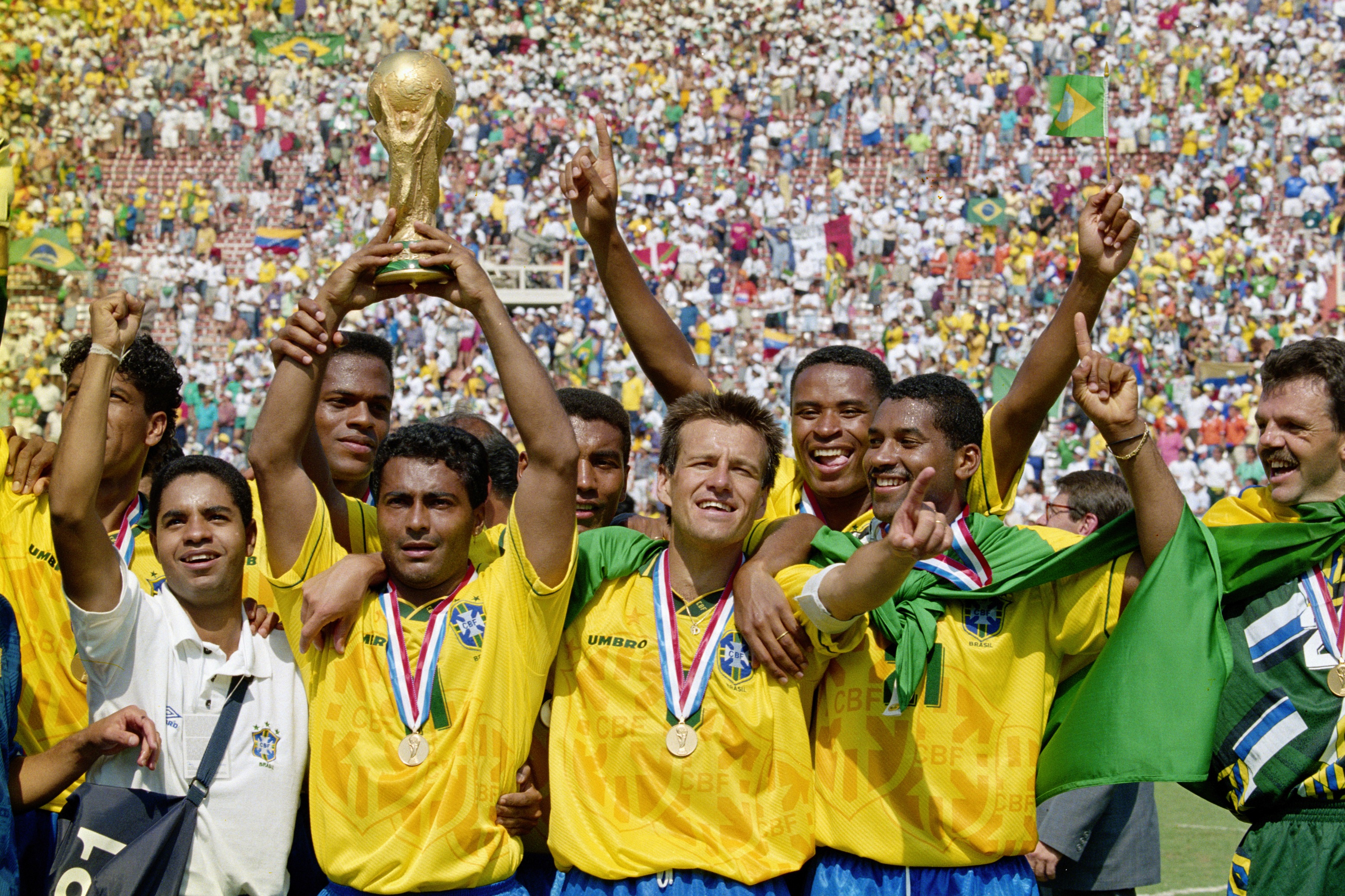World cup in 1994 – World Cup 1994: Remember the iconic images? The roar of the crowds? The unexpected upsets? This wasn’t just another World Cup; it was a pivotal moment in football history, held amidst a unique blend of American enthusiasm and global anticipation. From the shocking early exits of giants to the thrilling underdog stories, the 1994 tournament etched itself into the annals of the beautiful game.
Let’s dive into the goals, the controversies, and the unforgettable moments that defined this electrifying competition.
We’ll explore the tournament’s overall atmosphere, examine key rule changes, and delve into the performances of both the host nation and other notable teams. Get ready for a nostalgic journey through memorable matches, legendary players, and the lasting cultural impact of this captivating World Cup.
Tournament Overview
The 1994 FIFA World Cup, held in the United States, presented a unique blend of excitement and unexpected outcomes. While not traditionally a footballing powerhouse, the US embraced the tournament with a surprising level of enthusiasm, creating a vibrant atmosphere despite some initial skepticism about the nation’s readiness to host such a major event. The tournament itself was marked by several significant changes and a captivating series of matches.
Public Reception and Tournament Atmosphere
The 1994 World Cup saw a significant surge in global viewership, reaching an estimated 3.6 billion people. While the US hadn’t previously been considered a major footballing nation, the tournament fostered a newfound interest in the sport across the country. The atmosphere in stadiums was electric, showcasing a blend of passionate American fans and international supporters, creating a truly global celebration of football.
However, the overall atmosphere was also somewhat subdued compared to previous World Cups, perhaps due to the relatively low scoring matches and a perceived lack of flair on the field. This contrasted with the intense excitement generated by the marketing and media surrounding the event.
Key Innovations and Rule Changes
The 1994 World Cup introduced several notable changes. The most significant was the increased use of advanced technology, particularly in refereeing. The introduction of more consistent and visible refereeing decisions, though still a work in progress, aimed to improve the fairness and transparency of the game. Additionally, the tournament saw a stricter application of the rules, resulting in a higher number of yellow and red cards compared to previous editions.
This contributed to a more cautious and tactical style of play.
Host Nation Performance and Public Reaction
The United States national team, despite being the host nation, did not advance past the Round of 16. Their performance was a mix of impressive defensive displays and offensive struggles. While they managed to reach the knockout stage, their exit generated a mix of disappointment and pride amongst the American public. The overall feeling was one of cautious optimism regarding the future of soccer in the US, with the tournament seen as a catalyst for growth and increased participation in the sport.
Notable Team Performances
The following table summarizes the performances of five notable teams in the 1994 World Cup:
| Team | Group Stage Performance | Knockout Stage Performance | Final Result |
|---|---|---|---|
| Brazil | Won Group C | Won Round of 16, Quarter-final, Semi-final, Final | Champions |
| Italy | Won Group B | Won Round of 16, Quarter-final, Semi-final | Runners-up |
| Sweden | Won Group B | Won Round of 16, Quarter-final, Lost Semi-final | Third Place |
| Bulgaria | Second in Group A | Won Round of 16, Quarter-final, Lost Semi-final | Fourth Place |
| Germany | Won Group D | Won Round of 16, Lost Quarter-final | Quarter-final |
Star Players and Performances

The 1994 FIFA World Cup, held in the United States, witnessed a blend of established stars and emerging talents. While the tournament lacked the overwhelming dominance of a single player, several individuals left an indelible mark on the competition, showcasing exceptional skill and determination. Their performances shaped the narrative of the tournament, contributing to memorable matches and ultimately deciding the fate of nations.
Top Three Players of the Tournament
Determining the top three players of any World Cup is inherently subjective, dependent on individual preferences and criteria. However, considering their overall impact, consistency, and pivotal contributions, Romário (Brazil), Roberto Baggio (Italy), and Hristo Stoichkov (Bulgaria) stand out as the leading candidates. Romário’s clinical finishing and unmatched goal-scoring prowess propelled Brazil to victory, while Baggio’s individual brilliance carried Italy to the final.
Stoichkov’s leadership and goals were instrumental in Bulgaria’s surprising run to the semi-finals, showcasing his immense talent on the world stage. Each player contributed significantly to their team’s success, demonstrating exceptional skill and leadership qualities throughout the tournament.
Romário’s Goal-Scoring Prowess
Romário, the Brazilian striker, showcased an exceptional level of performance throughout the 1994 World Cup. His five goals, including crucial strikes in the knockout stages, were instrumental in Brazil’s victory. His movement off the ball, his clinical finishing, and his overall impact on the game were simply outstanding. One particularly memorable performance was his goal against Sweden in the quarter-finals.
The goal, a precise header following a perfectly weighted cross, demonstrated his aerial ability and his instinctive understanding of the game. His contributions went beyond just goals; his presence and leadership inspired his teammates, solidifying his status as a key figure in Brazil’s triumphant campaign. His total goals and assists, while not publicly available in a single, easily accessible source, were undeniably impactful, contributing significantly to Brazil’s overall goal tally.
The Overlooked Contribution of Jorginho
While the attacking stars often grab the headlines, the defensive solidity provided by Jorginho, Brazil’s defensive midfielder, played a crucial, often overlooked, role in their World Cup victory. His tireless work rate, his ability to break up play, and his tactical awareness shielded the Brazilian defense, allowing the attacking players the freedom to create and score. While not flashy, his consistent performances were vital in ensuring Brazil’s defensive stability.
His ability to control the tempo of the game and distribute the ball effectively allowed Brazil to dictate the flow of matches, a crucial element in their overall success. The statistical analysis of his tackles, interceptions, and passes might not stand out dramatically, but his contribution to the team’s cohesive performance was undeniable.
Unexpectedly Shining Stars
Several players exceeded expectations in the 1994 World Cup, showcasing their talent on the global stage. Their performances were often surprising, highlighting the unpredictable nature of the tournament and the potential for breakout stars.
- Oleg Salenko (Russia): Salenko’s five goals against Cameroon in a single match remains a World Cup record. His sudden emergence as a prolific scorer surprised many.
- Florin Răducioiu (Romania): Răducioiu’s impressive performances for Romania, including his goals against Switzerland and Argentina, established him as a rising star.
- Daniel Borimirov (Bulgaria): Borimirov’s midfield play was pivotal in Bulgaria’s unexpected semi-final run, showcasing his composure and ability under pressure.
Controversies and Issues: World Cup In 1994

The 1994 World Cup, held in the United States, wasn’t without its share of controversy. While the tournament boasted impressive infrastructure and a significant global audience, several issues marred its legacy, sparking debate and criticism even decades later. These controversies ranged from organizational shortcomings to on-field incidents that impacted the tournament’s outcome.The relatively low scoring nature of the tournament became a major point of contention.
Many attributed this to a perceived overly cautious and defensive style of play, influenced in part by the tournament’s format and the pressure of elimination. However, the impact of rule changes and refereeing decisions also played a significant role in shaping the narrative.
Low Scoring and Defensive Tactics, World cup in 1994
The 1994 World Cup is often remembered for its low-scoring matches. Critics argued that the emphasis on defensive tactics stifled attacking football, leading to many dull and uneventful games. The increased prevalence of counter-attacking strategies, coupled with the pressure of a single-elimination format, arguably encouraged teams to prioritize defensive solidity over offensive flair. This led to numerous 0-0 draws and 1-0 victories, disappointing many fans who expected more exciting, high-scoring matches.
The lack of goals was not solely due to defensive tactics, but also contributed to by the overall cautious approach adopted by many teams participating. This conservative approach was further amplified by the high stakes of each game within the knockout format.
The Alleged Colombian Drug Cartel Influence
Rumors of Colombian drug cartel involvement in the 1994 World Cup circulated, adding a layer of controversy beyond the on-field action. While never definitively proven, these allegations fueled speculation and raised concerns about the integrity of the tournament. The death of Andrés Escobar, a Colombian defender, shortly after the tournament further intensified these anxieties, though the connection to the cartel remains unconfirmed.
The speculation alone, however, cast a long shadow over the event.
Refereeing Controversies
Several refereeing decisions throughout the tournament sparked debate and criticism. Inconsistencies in officiating, perceived bias, and missed calls led to accusations of unfairness. While specific examples are difficult to isolate and definitively label as “controversial” without sparking further debate, the cumulative effect of these decisions created a sense of unease among fans and analysts. The lack of consistent application of rules, and the perceived influence of pressure on referees, undoubtedly contributed to the overall negative perception of the officiating.
Major Criticisms of the 1994 World Cup
The following points summarize the major criticisms leveled against the 1994 World Cup:
- Low scoring matches and prevalence of defensive tactics.
- Allegations of Colombian drug cartel influence.
- Controversial refereeing decisions and inconsistencies in officiating.
- Lack of atmosphere in some stadiums, despite high attendance.
- The perceived lack of passion and excitement compared to previous World Cups.
The 1994 World Cup, while perhaps not remembered for its high-scoring thrill-a-minute matches, certainly left its mark. From the controversies that sparked debate to the individual brilliance that shone brightly, this tournament served as a turning point, showcasing the growing global appeal of football and leaving behind a legacy that continues to resonate with fans today. It was a tournament of contrasts, a mix of high drama and unexpected results, ultimately solidifying its place in football’s rich tapestry.



